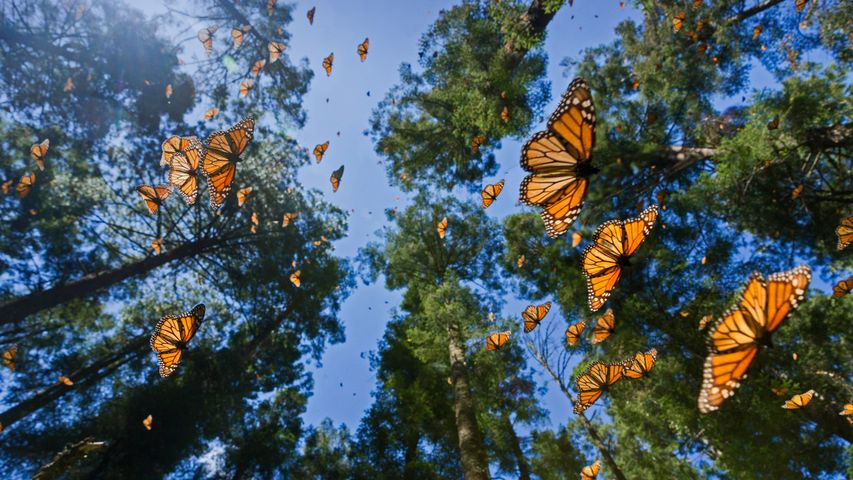Old World swallowtail butterflies on a flower
© Alberto Ghizzi Panizza/Getty Image
Meet for lunch?. Pollinator Week
We spread our wings and fly into Pollinator Week with these exquisite Old World swallowtail butterflies who are enjoying a sip of nectar. The gorgeous swallowtail is welcome in any garden, both for its beauty and its ability to pass pollen from flower to flower. Far less desired are swallowtails in their caterpillar form, which can take a toll on ornamental plants or citrus crops. There are more than 550 swallowtail butterfly species, and their name comes from the forked appearance of their hindwings, which can be seen when the butterfly is resting with its wings spread.
About three-quarters of all flowering plant species need the help of animals to move their heavy pollen grains from plant to plant for fertilization. While bees and butterflies are famously prolific pollinators, they're far from the only creatures to serve this vital function. Other insect pollinators include wasps, ants, flies, moths, and flower beetles. Vertebrates can pollinate certain plants, too: mainly bats and birds, but also some non-bat mammals (monkeys, lemurs, possums, rodents) and some lizards. Long-beaked birds such as hummingbirds, honeyeaters, and sunbirds pollinate deep-throated flowers.
Pollinating animals are our unheralded heroes, traveling from plant to plant carrying pollen on their bodies in an interaction that allows the transfer of genetic material critical to the reproductive system of most flowering plants. These plants provide us with food and innumerable resources. Without hardworking pollinators, humans would soon be an endangered species.
Related Images
Bing Today Images




 Asian swallowtail butterfly on a red spider lily
Asian swallowtail butterfly on a red spider lily
 Skipper butterfly on a coneflower, Rockefeller State Park Preserve, New York
Skipper butterfly on a coneflower, Rockefeller State Park Preserve, New York
 Monarch butterflies feeding from wildflowers
Monarch butterflies feeding from wildflowers
 Monarch butterflies at Pismo Beach, California
Monarch butterflies at Pismo Beach, California
 A pair of silver-studded blue butterflies
A pair of silver-studded blue butterflies
 Monarch butterflies in the Monarch Butterfly Biosphere Reserve, Angangueo, Mexico
Monarch butterflies in the Monarch Butterfly Biosphere Reserve, Angangueo, Mexico
 A Loepa oberthuri moth
A Loepa oberthuri moth
 Nine-spotted moth in Switzerland
Nine-spotted moth in Switzerland


